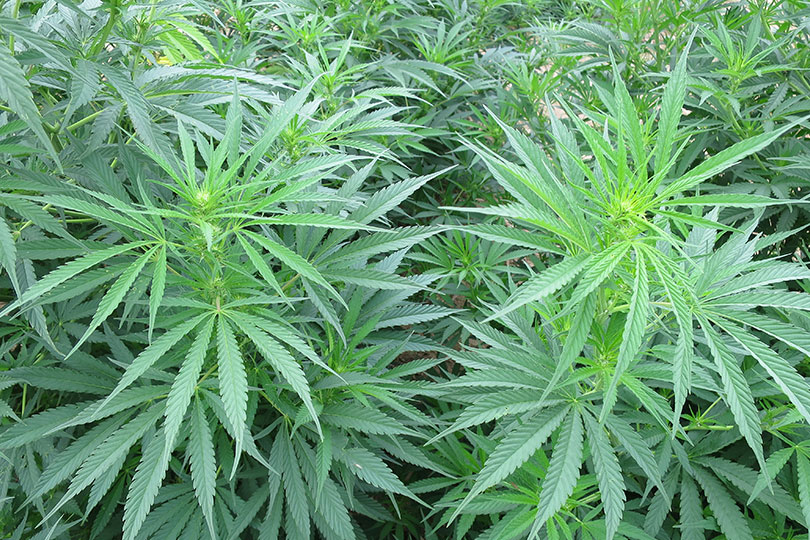The U.S. Department of Agriculture (USDA) announced the availability of two risk management programs that protect hemp farmers’ crops from natural disasters.
A pilot hemp insurance program through Multi-Peril Crop Insurance (MPCI) provides coverage against loss of yield because of insurable causes of loss for hemp grown for fiber, grain or Cannabidiol (CBD) oil.
The Noninsured Crop Disaster Assistance Program (NAP) coverage protects against losses associated with lower yields, destroyed crops or prevented planting where no permanent federal crop insurance program is available.
Farmers may apply now, and the deadline to sign up for both programs is March 16.
“We are pleased to offer these coverages to hemp producers. Hemp offers new economic opportunities for our farmers, and they are anxious for a way to protect their product in the event of a natural disaster,” Farm Production and Conservation Undersecretary Bill Northey said.
Multi-Peril Crop Insurance Pilot Insurance Program
The MPCI pilot insurance is a new crop insurance option for hemp farmers in select counties of 21 states for the 2020 crop year. The program is available for eligible farmers in certain counties in Alabama, California, Colorado, Illinois, Indiana, Kansas, Kentucky, Maine, Michigan, Minnesota, Montana, New Mexico, New York, North Carolina, North Dakota, Oklahoma, Oregon, Pennsylvania, Tennessee, Virginia and Wisconsin. Information on eligible counties is accessible through the USDA Risk Management Agency’s Actuarial Information Browser.
Among other requirements, to be eligible for the pilot program, a hemp farmer must have at least one year of history producing the crop and have a contract for the sale of the insured hemp. In addition, the minimum acreage requirement is five acres for CBD and 20 acres for grain and fiber. Hemp will not qualify for replant payments or prevented plant payments under MPCI.
This pilot insurance coverage is available to hemp growers in addition to revenue protection for hemp offered under the Whole-Farm Revenue Protection plan of insurance. Also, beginning with the 2021 crop year, hemp will be insurable under the Nursery crop insurance program and the Nursery Value Select pilot crop insurance program. Under both nursery programs, hemp will be insurable if grown in containers and in accordance with federal regulations, any applicable state or tribal laws and terms of the crop insurance policy.
Noninsured Crop Disaster Assistance Program
NAP provides coverage against loss for hemp grown for fiber, grain, seed or CBD for the 2020 crop year where no permanent federal crop insurance program is available.
NAP basic 50/55 coverage is available at 55 percent of the average market price for crop losses that exceed 50 percent of expected production. Buy-up coverage is available in some cases. The 2018 Farm Bill allows for buy-up levels of NAP coverage from 50 to 65 percent of expected production in 5 percent increments, at 100 percent of the average market price. Premiums apply for buy-up coverage.
For all coverage levels, the NAP service fee is $325 per crop or $825 per farmer per county, not to exceed $1,950 for a producer with farming interests in multiple counties.
Eligibility Requirements
Under a regulation authorized by the 2018 Farm Bill and issued in October 2019, all growers must have a license to grow hemp and must comply with applicable state, tribal or federal regulations or operate under a state or university research pilot, as authorized by the 2014 Farm Bill.
Farmers must report hemp acreage to FSA after planting to comply with federal and state law enforcement. The farm bill defines hemp as containing 0.3 percent or less tetrahydrocannabinol (THC) on a dry-weight basis. Hemp having THC above the federal statutory compliance level of 0.3 percent is an uninsurable or ineligible cause of loss and will result in the hemp production being ineligible for production history purposes.
For more information on USDA risk management programs for hemp farmers, visit farmers.gov/hemp to read frequently asked questions.
For more information on the U.S. Domestic Hemp Production Program, visit USDA’s Agricultural Marketing Services’ website to read AMS frequently asked questions.

